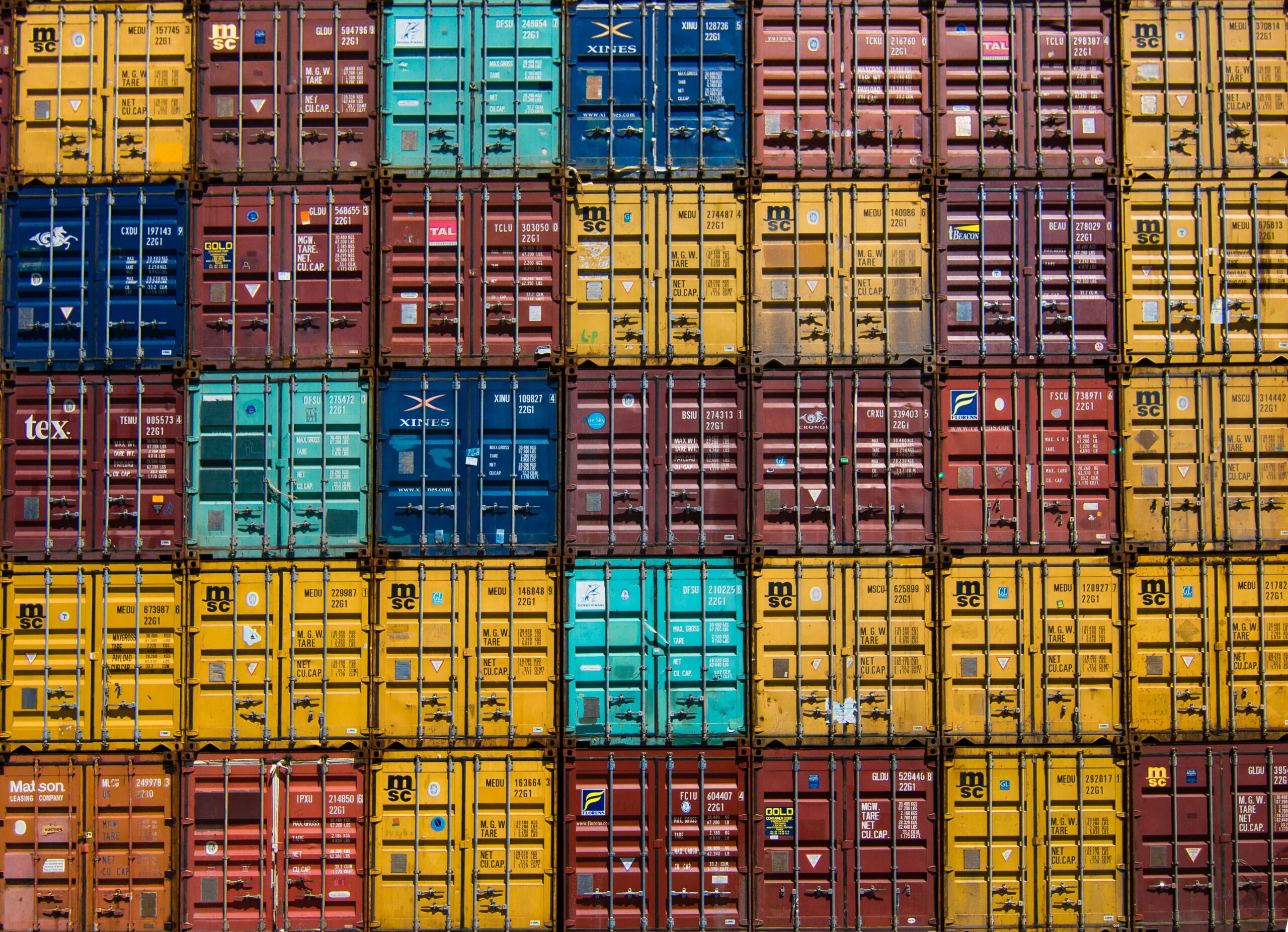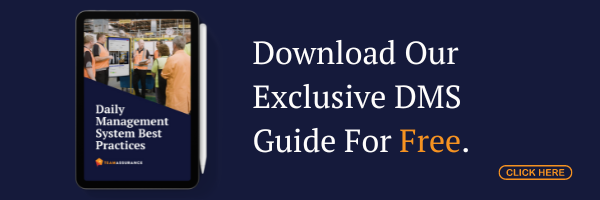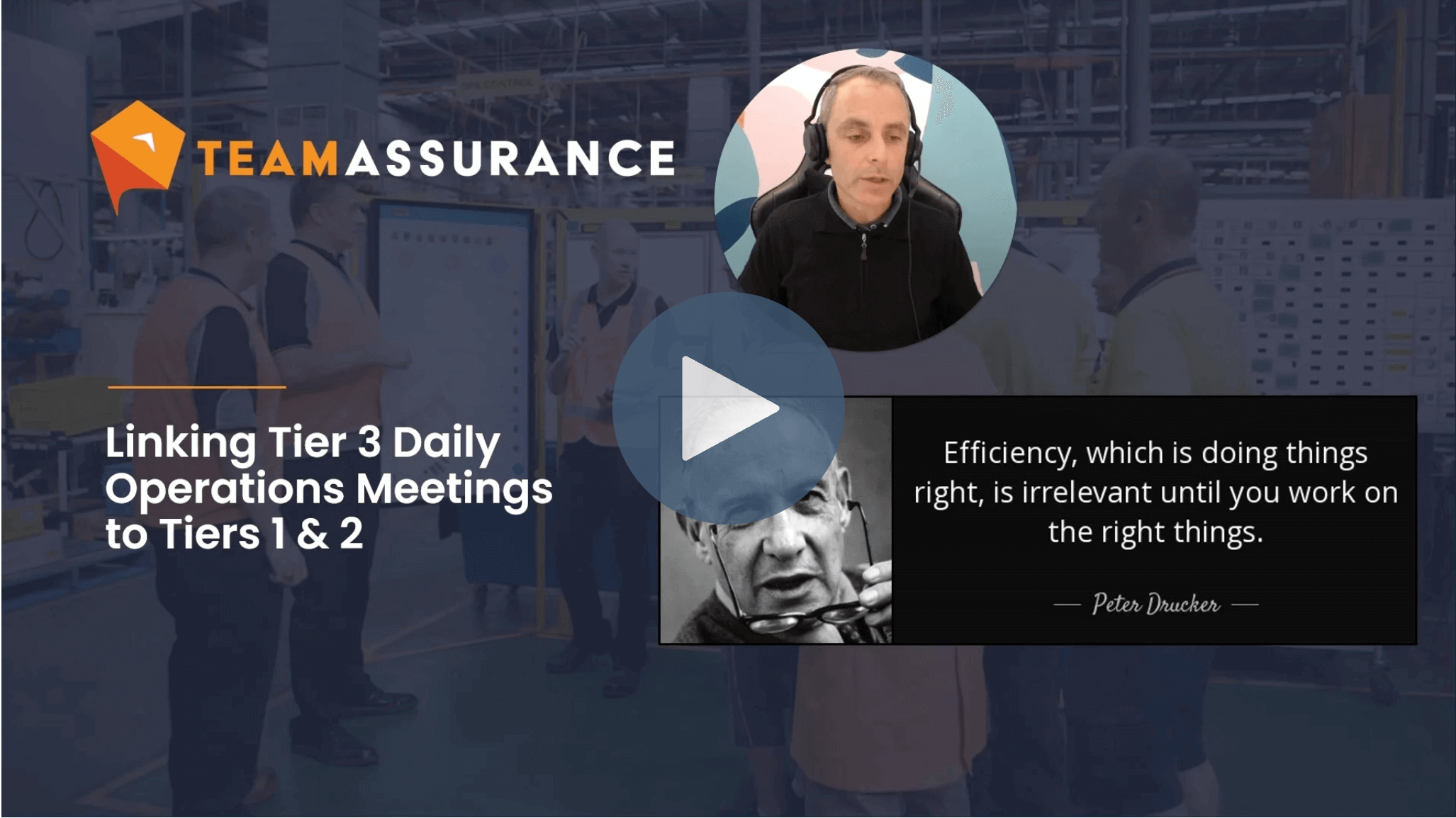We delve into the wastes of lean – how to identify them, how to improve in each area, and the questions you need to be asking.
A Lean approach essentially means we are trying to expose the waste in our process – simply and visually. By exposing waste we are aiming to eliminate it at least improve the current situation. This is done through engagement with the key stakeholders and utilising a clear problem-solving methodology.
Reducing waste is a journey to find the single best way to deliver our service (or manufacture our product) in our process environment. We do this through the use of standardisation incremental improvement and learning. Waste reduction must be intentional and focussed on the ‘right’ waste that moves us toward our immediate target condition. This then enables us to achieve our strategic objectives over the longer term. A fundamental for everyone in our organisation is that they are able to identify and recognise waste, give it context and to ask the question why?
Identifying the wastes of lean
The 8 wastes of Lean are as follows:
Defects: Things that are not right
Defects are variations and deviations from the standard or the expectation. Defects can come in a variety of forms and can impact everything we interact with in the workplace. This includes everything from our raw materials to systems and processes. Some examples are:
- Information such as specifications, schedules and forecasts
- Raw materials or component parts
- Tools, equipment, technology
- Instructions or communication
- The process or system itself
- Workplace training and development
The impact of defects means that time and effort is spent reworking or redoing the work. There are also flow-on effects of passing poor quality on through our process to our internal customers and , worst case, to our end customer. The question is: how do we define and recognise what is defective and what is not?
Overproduction: Too much, too early, too fast
Overproduction is often considered the greatest of the 8 wastes of lean and for good reason. Overproduction taps into some of our most basic human instincts – to feel safe. We focus on ‘just in case’ rather than on when things are actually required. Any good process should rely on the stimulation of customer demand before responding. However, in the case of overproduction. the process responds in excess of the customer demand. For instance when there is no actual customer demand or before the customer actually requires it.
This, of course, causes a number of flow on problems:
- Excess inventory and storage requirements
- Uneven process steps and bottlenecks
- Cash and resources committed to activity that has no immediate payback
- Avoids or covers up deeper process issues such as poor quality, reliability, changeovers
Overproduction puts stress on the system and inevitably places stress and overburden on human beings and assets. Continued stress can cause a breakdown in the process leading to unsafe working conditions, poor quality and negative consequences for people.
Waiting: Not having what is required
Waiting is a common waste yet one that is almost normalised. Everyone in every organisation spends time waiting for something, multiple times each day. Why is this happening? We should always have what we need to do the job we are tasked to do. However, we often don’t have it and we are forced to wait. Some examples of things we might wait for:
- Physical components or raw materials
- Tools of our trade
- Information and communication
- A phone call or an email
- Someone to arrive on time
If we are waiting for something what do we do? We generally find a workaround or we look for something else to do – technically moving into that dreaded overproduction. Waiting is extremely frustrating and if our process is waiting then so is our customer. Waiting is ultimately caused where there is an absence of pull in the system impacting flow. We could view waiting as the trough to overproductions peak. Again, it is simply a case of working to a standard situation where we have the right work at the right time in the right quantity.
Non use of skill: Not utilising the potential of our people
For me this is hands down the most important waste to address. In Lean we talk about respect for people as the core principle, All too often this philosophy is not practiced in many organisations.
When we think about engaging our people it is more than simply getting them moving – it is about capturing their hearts and minds. It is about creating an inclusive work environment and culture with shared goals and objectives. People should feel a sense of belonging, have meaning and purpose in their daily work and should be supported by good quality leadership.
The ‘non use’ part of this waste is where we are leaving people’s talent and potential on the table. Human beings in the workplace are often the biggest cost and regarded as the biggest asset. However, they are the most under-utilised resource. Quite often this is due to a lack of visibility around the skills, certifications, and training of our people.
This is low hanging fruit that can be quickly resolved with development tools like a skills matrix. Staff capabilities, qualifications, pending training and process ownership becomes visual. This allows leaders to take action (and staff to undertake self-directed development).
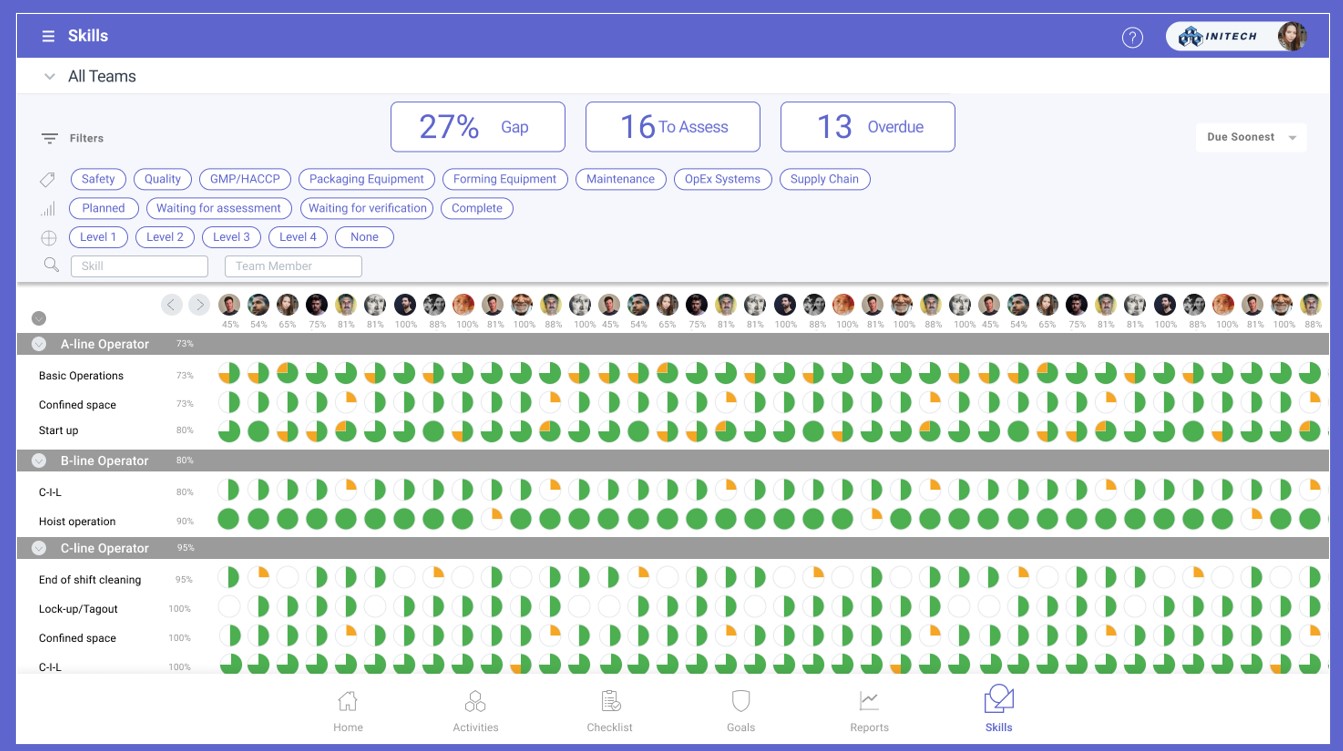
Some examples of wasted potential that can be avoided through skills management tools are:
- Not matching the right people / skills to the right work
- Not engaging with the people who do the work (subject matter experts)
- Neglecting to understand previous work experience or other externally developed skills
- Not providing opportunities for people to learn or develop
- Not utilising people’s inherent creativity and problem solving skills
The list goes on but quite simply it comes down to the inability of most organisations to simply engage with the people at the frontlines.
We must listen to and support them in an appropriate way. If you want to understand and solve the problems of the process and culture of your business – just engage with and listen to your people each day.
Learn more about the effects of non-use of talent and how to improve the situation here.
Transport
The waste of transport is essentially the waste of moving stuff. Moving things from point A to point B may or may not be a necessary component of the process. However, the movement in and of itself does not add value. Transport waste typically speaks to the distance that physical items travel through a process – this can typically be driven by poor layout and process design. Transport waste is just as much about the frequency of transport as it is about the distance so double handling and multiple touches of items are just as big a problem. Conveyors are another source of massive transport waste.
Again, we need to ask the question if the distance that materials or goods are travelling could be reduced or eliminated. Are there process steps that could be moved closer together or even better connected?
Transport can and should be viewed from another perspective: the transport of information into people’s heads.
Are we effectively providing the right information in order for them to conduct a task or make a decision is critical? How often do we have misunderstanding, assumption, ambiguity or outright confusion because we fail to present necessary information in a simple, visual way. This can create incredible amount of wasted time, energy and resources. We must ensure that we do not fail to communicate the important things simply, visually and effectively.
Inventory
Inventory waste is the waste of stock. We can have too much, too little or the incorrect stock. Essentially, we need to focus on the right stock to facilitate flow in the process. Too much stock is generally an outcome of overproduction where we have overpurchased or overproduced something resulting in an excess of inventory.
This could apply to raw materials, finished product, information on paper instead of digital form, human beings, assets and equipment and so on. Too much of something means that it is in excess of requirement and the excess has to be managed in some way. This means the items are taking up space of some sort. They may need to be moved or moved around; they will need to be managed and controlled. Excess inventory means cost tied up in something that has no guarantee of being turned into cash anytime soon. This lean waste certainly creates headaches in all areas of the business.
I always think of inventory as a “just right” proposition. Not too much, not too little – just right. We can get a little caught up sometimes at either end of the inventory spectrum rather than a focus on what is required at the time to maintain a healthy process flow.
Motion
The waste of motion addresses human movement in the workplace. Of course, we need to move in the workplace to conduct activity. However, we must ask, “does this movement have a purpose?”
There is a clear differentiation between adding value and simply keeping busy. Unfortunately, our conditioning from the moment we enter the workplace is to ‘look’ busy – to always appear to be doing something. This behaviour is often rewarded in the workplace and if people are calm and still they are seen to be not ‘busy’ enough. We must view excessive motion as any movement no matter how minor that detracts from value adding activity. This could be as small as an additional turn of a screw or mouse click, through to walking halfway across the factory to find a tool or a piece of information.
Motion improvement ideas can be captured by frontline teams on video and shared instantly with a digital DMS. New ways of working can be demonstrated across the organisation for instant adoption / feedback.
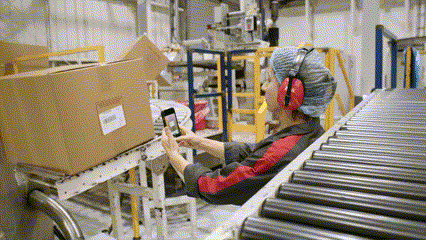
The image of a surgeon operating in theatre always comes to mind where everything the surgeon needs comes to them as they need it. We must think of our people no differently. It is fundamental that everything a person requires to do their job is available to them when and where they need it. The important part is that people remain calm and still. We must optimise their expertise and keep the focus on constantly adding value to the right piece of work.
Excessive motion is also about the wear and tear on the human body. What can be done to improve ergonomics, to reduce repetitive movements and unnecessary or unsafe manual handling?
Extra Processing
Extra processing is the waste of doing too much, or doing more than is required in our process for the customer. Like inventory it is a question of doing the right amount in accordance with the requirements of the standards – no more, no less. Some examples of extra processing are:
- Rework – spending additional time, resources and cost on a good or service that should be right first time
- Multiple inspection points and checks
- Duplication of information
- Overworking a product or service beyond the customers requirements
Extra processing can often be built into ‘we have always done it this way’ and the assumptions of the requirements of both internal and external customers.
Reflecting on the 8 wastes of lean
I’m sure, reflecting on your own process as you read through this list, that you can recognise that waste is everywhere. Where we have one primary waste we are likely to have most – if not all – of the other wastes which have a cumulative and compounding effect. If we have a daily focus on exposing and reducing waste and we have a critical mass of people involved in this process then we have an extremely powerful tool at our disposal.
Remember that Lean is not about the elimination of waste per se – it is about optimising the flow of the process, moving consistently toward a strategic true north. It’s about identifying and removing the obstacles that make life difficult for people working in the process every day. Waste reduction and elimination is a by-product of the continuous improvement and continuous learning process.
Reduce waste by removing ‘locally optimised islands’ from your greater C.I. Framework
Aside from eliminating waste from a Lean process, we must also ensure it is supported by equally optimised adjacent processes and systems. Standardised problem solving techniques, SOPs, and Tiered Daily Management that can handle the full PDCA loop helps to stop waste creeping back in. Bear in mind these shouldn’t be developed in isolation. To make the most from each process, and avoid information silos, we must develop them all together.
This is exactly what we designed the TeamAssurance platform to achieve. The illustration below shows how we built an interconnected platform that avoids the locally optimised and disconnected ‘Point Solutions’ (digital or analog) that do not help and, in fact, hinder progress towards your goals.
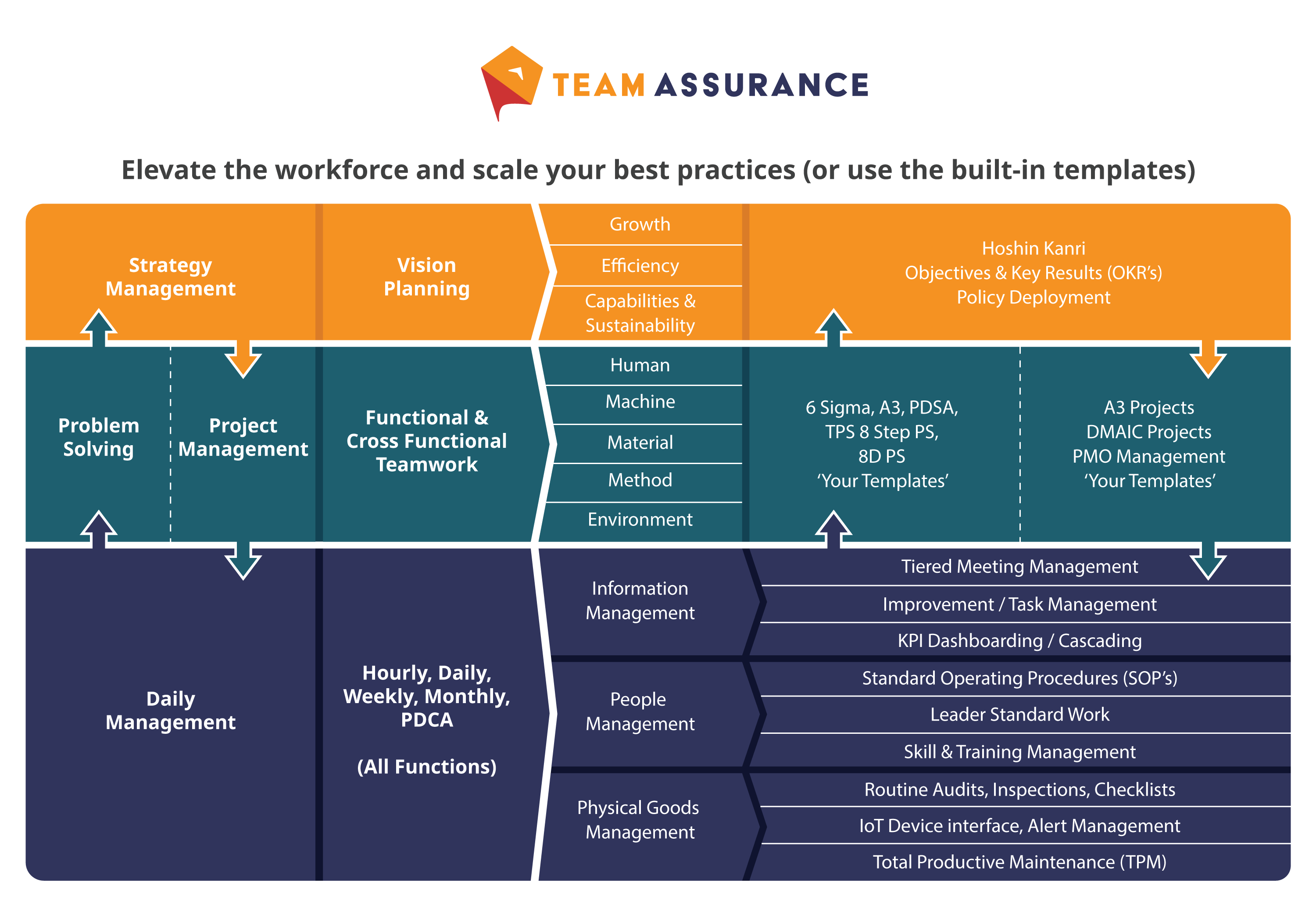
TeamAssurance enables organisations to expose waste quickly and bake-in continuous improvement habits within all teams. If you would like to further explore Lean digital aids for your organisation (or your clients) contact us today for a platform demonstration.

